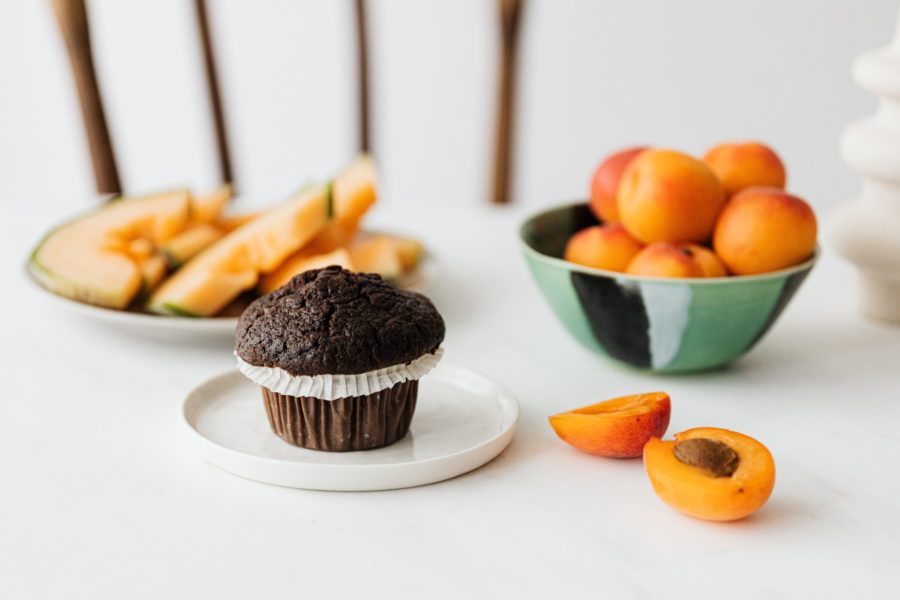It’s amazing how often I see women at the Women to Women clinic who have health issues that can be traced back to insulin resistance. Polycystic Ovarian Syndrome, or PCOS, is one such condition that we see with increasing frequency. PCOS affects about 10% of women worldwide and can occur at any age before menopause. It can often go undiagnosed for months, because its symptoms overlap with so many other women’s health concerns. PCOS itself is not a disease and no one is sure yet what causes it in the first place.
Women with PCOS have ovaries that create an abundance of follicles each month without producing an egg. PCOS can contribute to irregular periods, depression, excessive weight gain (despite diet and exercise efforts), acne, and excess facial hair. It is also a common cause of infertility (for more information, read our article, “PCOS and Fertility – Answers to Your Questions.”
PCOS is often temporary. I see it in girls going through puberty (when their ovaries are trying to set a regular menstrual pattern) and during the transition years of perimenopause. It usually goes hand-in-hand with insulin resistance. I find that PCOS responds well to a program of natural support that restores hormonal balance, especially the dietary changes I recommend for women with insulin resistance.
What is PCOS?
Understanding PCOS is easier if one tries to picture what goes on inside our ovaries every month. For more about women’s monthly cycles, please refer to my article on menstruation.
Each month our ovaries begin to ripen a number of follicles. You may be surprised to hear that normal follicles are cysts – in that they are pockets of tissue filled with benign fluid and hormones, mostly estrogen. The amount of immature follicles changes with each cycle— but during normal times, one or two follicles grow stronger than the others and produce an egg. When we ovulate, the egg in the dominant follicle pops out and flows into the fallopian tube on its way to the uterus. This event triggers a host of hormonal secretions, one of which is progesterone, that will plump up the uterus to support a pregnancy if the egg is fertilized or a normal monthly period if it is not.
Polycystic ovaries
When ovaries become polycystic, they create a lot of follicles that form like a pearl necklace on the ovaries. No one follicle becomes dominant and ovulation cannot occur. For the most part, these multiple ovarian cysts are not dangerous in themselves—unlike larger ovarian cysts that cause pain and can rupture. But they do bring with them a range of uncomfortable side effects. Because a woman with PCOS doesn’t ovulate, her natural sequence of hormonal events gets interrupted, her levels of estrogen and androgens (testosterone and DHEA) remain high, and her body reacts with symptoms.
What are the symptoms of PCOS?
The most common symptoms of PCOS are an irregular period, infertility, increased hair growth and unusual weight gain, even with dieting or increased exercise. Women with PCOS will often go for months without a period and then start bleeding heavily for days. This occurs when the uterine lining has gotten too thick and the body must naturally shed it. Because PCOS disrupts ovulation, it can be very difficult to become pregnant.
Other signs of PCOS include acne, high blood pressure, obesity, and abnormal facial and body hair growth (due to too much testosterone). One of the less recognizable symptoms of PCOS is depression, which can be misread as a bipolar illness. While depression stems from many factors, we think it is always a good idea to consider PCOS if patients have other symptoms. In some medical practices antidepressants are prescribed, which do not alleviate the underlying issues, and therefore are not very helpful.
PCOS and Insulin Resistance
Another telltale symptom of PCOS is steady, significant weight gain — even with reduced caloric intake. Some women report that they’re gaining weight no matter what they do. It’s not unusual for patients with PCOS to tell me they’ve gained 60 or more pounds in less than a year despite dieting all the time and exercising. This weight usually accumulates around their middle. Why do women with PCOS gain weight at such alarming rates? The research is showing that PCOS is strongly linked with insulin resistance.
Insulin resistance, a condition some people get by eating too many carbohydrates, leads to sustained high levels of insulin in the bloodstream. It is possible that this extra insulin hitches into the receptors lining the ovary and stimulates cyst production. This is an issue that should be monitored because women with insulin resistance have a much higher risk of developing other serious health problems, like diabetes. On the bright side, women with insulin resistance and PCOS respond very well to modifications in their diet, adding nutritional supplements, and beginning an exercise program. I’ve found that my patients often get normal periods as their insulin levels normalize.
Should I See a Doctor if I Think I Have PCOS?
If any of these symptoms describe what you’ve been feeling, it’s important to see your healthcare practitioner. If I suspect PCOS in a woman, I will do a complete evaluation, including checking for insulin resistance. This work-up includes a physical examination, a fasting lipid profile, a glucose test, hormone levels, and an insulin test (before and two hours after a high-carbohydrate meal). A blood sample is very informative for testing elevated thyroid and prolactin levels. If these tests come up positive, I also look for an altered FSH to LH ratio and increased levels of androgens. Occasionally I will suggest a pelvic ultrasound. It can be possible to see the pearl-necklace pattern of cysts on some women’s ovaries.
If there is any abdominal pain or pressure around the ovaries, an evaluation is certainly necessary. In most cases a woman will be monitored on a regular basis to make sure her cysts are not at risk for rupture.
If a patient has been trying to get pregnant for more than a year, I usually refer her to a fertility specialist, especially if she is over the age of 35. Ovulation stimulants, like Clomid, can be helpful for many would-be moms who have PCOS. When a non-menopausal woman skips a period for more than four months, pregnancy should be considered.
Having regular menstrual periods is important to prevent osteoporosis and maintain the protective effects of estrogen. Occasionally a woman with PCOS will simply not get her period. If she is not pregnant, I advise stimulating a period after four months with the use of Provera, Aygestin or micronized progesterone (a bioidentical hormone). This protects the lining of the uterus from becoming too thick or unusual.
What is the Treatment of Polycystic Ovarian Syndrome?
Traditionally, doctors have overlooked PCOS unless it was diagnosed relative to infertility or irregular bleeding. If diagnosed it was, and often still is, commonly treated with birth control pills. The Pill lessens the symptoms of PCOS by short-circuiting ovulation and giving the ovaries a rest from follicle production. This is always an option for women looking to avoid pregnancy. Testosterone levels will go down on the Pill and it is good for regulating cycles but it won’t address the underlying issue of insulin resistance.
Some doctors are now prescribing a diabetes drug, Glucophage, for blood sugar control. However, in my experience, if a woman with PCOS doesn’t attend to some of her lifestyle choices — such as adhering to a PCOS diet — her ovaries become polycystic again when she goes off either pill. This is particularly irksome for women trying to get pregnant.
At the Women to Women clinic, I treat PCOS with a combination approach, whether it is a chronic or a temporary condition of perimenopause. I’ve helped countless women reduce their polycystic ovaries through nutritional supplements, progesterone cream, enriched nutrition and regular exercise. This combination approach is an effective way to start bringing the body back into hormonal balance.
Progesterone cream is an especially good way to bring on a regular monthly period. Applying the cream at Day 14 for two weeks introduces this essential hormone back into the body at the right time during a cycle. In a menstruating woman, ovaries produce progesterone after ovulation. Eventually the body catches on to this rhythm and begins to cycle on its own, thereby reducing the presence of cysts.
If you have PCOS or think you do, I hope that you will take heart in realizing there are many things you can do to alleviate your symptoms naturally, without drugs. Like any condition related to hormone imbalance, taking the right steps to improve your lifestyle and nutrition will do wonders to restore your well-deserved good health!
For more information, read my article, “Nutritional and Lifestyle Guidelines“.






